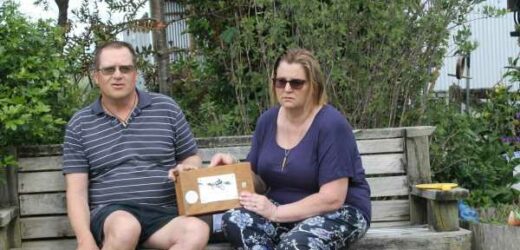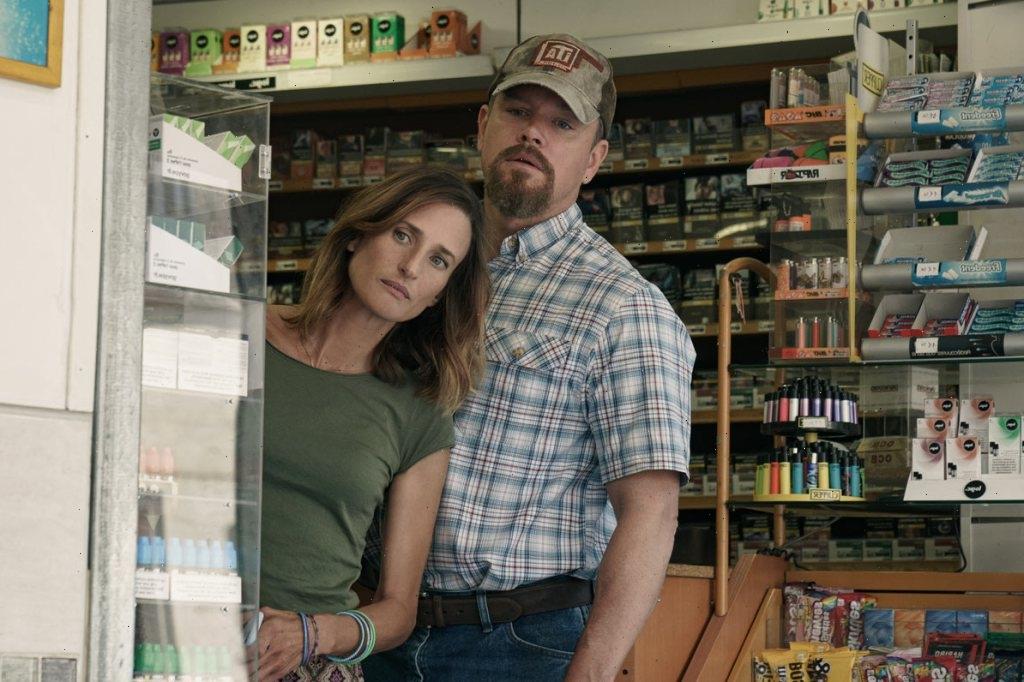The grieving parents of Dylan Heaps say their son fell through the health system’s cracks.
Dylan, who was 22 at the time and lived in Dannevirke with his partner, had been riding in a motocross event in December 2015 when he scaled a steep hill and crashed.
After his release from hospital he died due to a blood clot – something his parents Donna and Stuart Heaps say was missed by medical experts.
They also say Dylan was not properly warned about the dangers of blood clots.
The couple took a complaint to the Health and Disability Commissioner after Dylan’s death.
In the bike crash, Dylan had dislocated and fractured his hip, resulting in surgery at Palmerston North Hospital.
He was discharged on December 14 and told to keep his leg immobile, although he was up and about within hours of his surgery.
Donna says Dylan had complained of knee pain before his discharge.
On December 17, with Dylan unable to sleep because of the pain despite the cocktail of painkillers he was on, his partner Caitlin called an ambulance.
But even then, the paramedic was not seen to do any observations and had told them he could go to hospital – but there would be a long wait and they would just change his pain management.
Donna took him to the GP on December 18 and even brought up the possibility of DVT, which she knew a little bit about through Stuart suffering an injury, but says this was dismissed as being “too soon”.
The clot was not identified until Christmas Eve when Dylan saw a hospital registrar who ordered a scan.
Dylan was given an injection of Clexane, which is used to stop a clot getting bigger and Warfarin – an anticoagulant meant to assist with preventing blood clots – and sent home, told to enjoy Christmas and “have a beer if he wanted”.
Two days later, on Boxing Day, he collapsed and despite efforts to revive him, he died.
His parents felt Dylan’s care was inadequate and not enough had been done to ensure he knew the risk of deep vein thrombosis (DVT).
“There was nothing on Dylan’s discharge summary,” Donna Heaps says.
She says when Dylan saw a doctor on Christmas Eve, all he was told was that if he experienced difficulty breathing, to go back.
“Well, he went back in a hearse.”
She says there were other things that could have been done, such as complete bed rest. She also questioned why he wasn’t given compression stockings.
She questioned whether Dylan had been warned of the risks, and doctors had made sure he understood those risks.
The couple made a complaint to the Health and Disability Commissioner, who investigated and through advice from an expert found that Dylan had been at “mild risk of thrombo-embolic complications”.
The expert was critical of the hospital’s inadequate documentation of discussions held with Dylan, especially in terms of peri-operative complications and the risk of venous thrombosis and pulmonary embolism.
The report also criticised St John, with conflicting accounts of information provided by the paramedic as well as inadequate documentation.
The GP’s lack of documentation was also noted.
The Health and Disability Commissioner’s report was completed in March 2018 and a copy was provided to Dylan’s parents, but they were told the findings were not being made public.
Donna questioned this and contacted a lawyer, who wrote to the commissioner pointing out it was of public interest.
In the report from the coroner, released last month, the commissioner’s adverse comments about MidCentral DHB, St John and the doctor who saw Dylan on December 18, 2015 were noted.
The coroner also noted recommendations that included St John writing a letter of apology to Donna and Stuart as well as an audit of their documentation; MidCentral providing a selection of clinician’s results from the e-learning module on venous thromboembolism; and that the GP audit his clinical documentation.
A review of protocols at MidCentral resulted in policy documents on assessment, treatment and follow-up care of VTE, and two brochures had been produced.
The report recorded the Heaps’ wish for more education around the risks and symptoms of deep vein thrombosis and endorsed such information being made available to patients in similar circumstances.
Following the commissioner’s report, Donna Heaps felt that despite assurances, nothing changed.
Three years ago she took her mother for a surgical appointment.
“The nurse came out, handed us a pack of stuff, including compression stockings. Not a word about clots.”
Angry, Heaps contacted the hospital CEO.
This led to an invitation to speak in front of about 60 clinicians to tell Dylan’s story.
“I felt like I was preaching to the converted, telling them how to do their job.”
During a recent pre-admission appointment, with her mother, Heaps was pleased to note the nurse measured her mother’s legs and informed her about the risks of clots.
That nurse had been one of the clinicians at the talk Heaps had given.
“If I could talk to everyone in this country, it would stick in their heads,” she says.
Chief medical officer at MidCentral DHB, Kelvin Billinghurst, said the DHB acknowledged the release of the coroner’s findings.
“MDHB remains committed to following evidence-based, best-practice guidelines, to keep patients informed of the possible risks and to continue to audit, learn and strive for excellence.
“We acknowledge the distress the release of the coroner’s report may cause and extend our sympathies to the family, whānau and friends.”
In a statement, St John clinical director Dr Tony Smith said they had reviewed the findings of the Health and Disability Commissioner pertaining to Dylan’s tragic death and had taken recommendations on board to improve future patient care.
“Following the event, St John apologised to Mr Heaps’ family for failing to provide the level of care expected of ambulance officers and for the distress it caused.
“We also carried out other actions which included providing further clinical education to the ambulance officer in relation to clinical note-taking, differential diagnoses and giving patients adequate knowledge to make informed decisions.
“St John would like to again pass on our sincere condolences and apologies to Mr Heaps’ family.
“We strive to always do our best to serve our communities and our patients and take any learnings as an opportunity to increase improvement in patient care.”
Source: Read Full Article

/cloudfront-ap-southeast-2.images.arcpublishing.com/nzme/V7BX4L6IRYH5RZPZB5RQPGKH6Q.jpg)
/cloudfront-ap-southeast-2.images.arcpublishing.com/nzme/3O2BZ4JDVUDGJLGG37CNRMHS5I.jpg)

